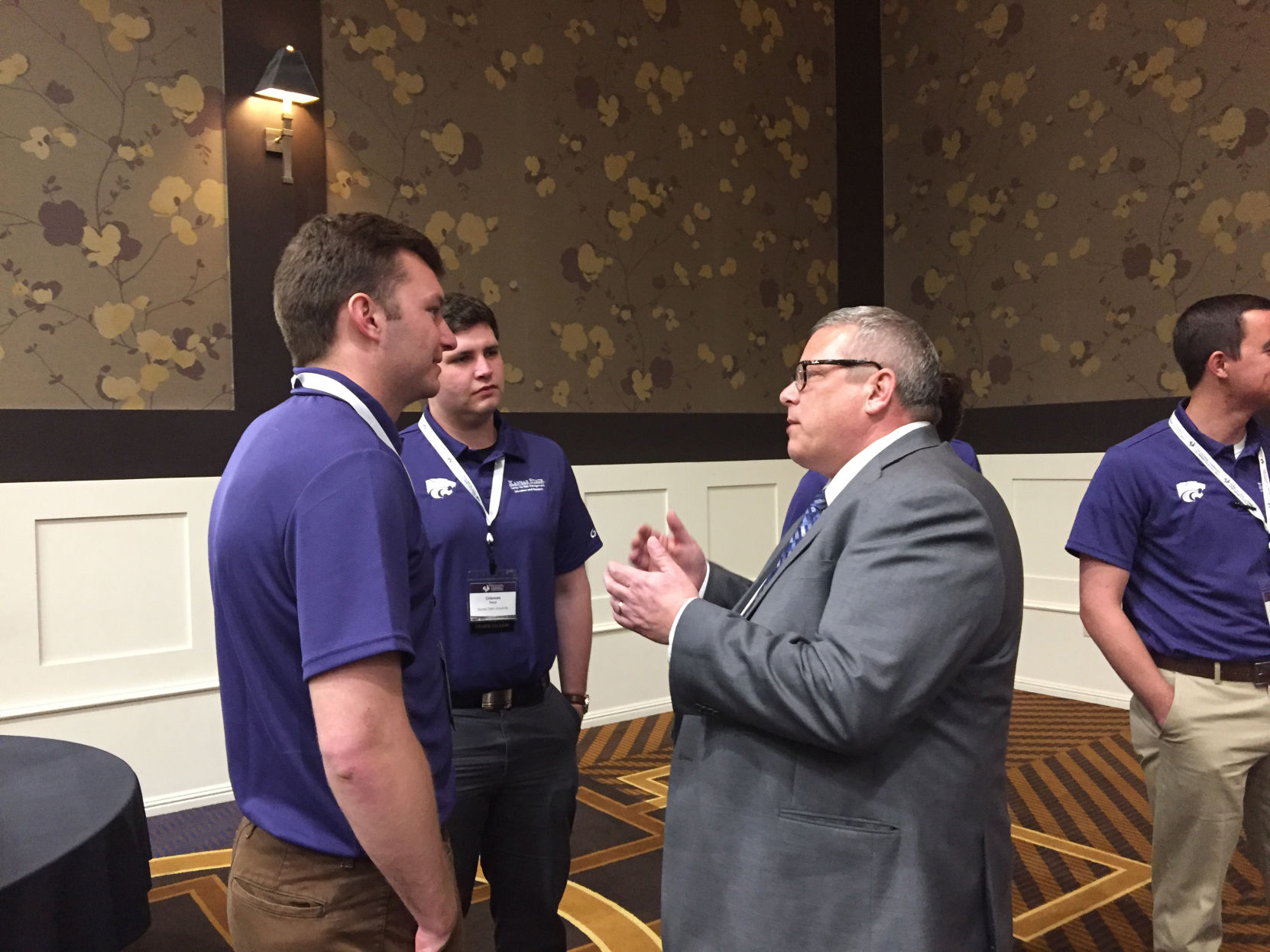In the frenzied world of commodity-futures markets, gone are the days of “open outcry”—men in colorful jackets waving their hands and shouting wheat futures orders. Much faster, electronic trading is one of the many changes to the market landscape in recent years.
Some of those changes have posed challenges for farmers and livestock producers who use futures to manage risk, for merchants and traders who use futures for commerce and for government officials who regulate the markets as well as economists who study them.
The Center for Risk Management Education and Research, based at Kansas State University and led by agricultural economics professor Ted Schroeder, worked with the Commodity Futures Trading Commission to bring agricultural producers, federal regulators, brokerage firms, commodity merchants, elected officials, CFTC regulators, market institutions and economists together recently in Overland Park, Kansas.
“We had 370 attendees, with more on a waiting list,” Schroeder said, noting that he believed it was the first conference specifically designed to bring all involved parties together to discuss what’s working and what isn’t for those who use futures to manage risk and lay the groundwork for any changes that should be implemented.
“As we look at the ag commodities, there have been so many structural changes, such as high frequency electronic trading, plus who’s using these markets and how, both domestically and globally, they are changing. The need is greater than it’s ever been to be aware of the challenges,” he said.
What’s coming out of the conference, Schroeder said, is a set of priorities addressing what should be changed or investigated in the near term. The result could involve changes in CME Group futures themselves, changes in oversight by the CFTC or how those who use futures contracts manage their positions.
“The need for research became quite apparent,” Schroeder said. “By the time we left, CFTC (officials) were already saying that they wanted to do it next year and that Kansas State University ‘needs to be our partner.’”
Kansas Senators Pat Roberts and Jerry Moran provided policy updates. USDA Undersecretary Bill Northey and John Floros, K-State dean of the College of Agriculture and director of K-State Research and Extension, as well as CFTC Commissioner Giancarlo addressed attendees.
Schroeder said it was helpful to get people together face to face.
“Sometimes market regulators in D.C. need to get out of D.C.; colleagues on campus need to get away from their offices on campus; ag industry participants need to get away from the farm or their trading desks. You couldn’t have done this kind of event via webinar.”
One of the recent challenges in agricultural futures is the lack of price convergence in futures markets with the underlying cash market, said Art Barnaby, agricultural economist with K-State Research and Extension. Convergence is the movement of the price of a futures contract toward the spot price of the underlying cash commodity as the delivery date approaches, but in some cases, convergence has not been occurring in recent years.
“Convergence is required for cooperatives, grain elevator hedges, farmer hedges and crop insurance claims to work properly,” Barnaby said. “Without convergence, there is no connection between futures and cash markets, and grain futures markets are not likely to survive in the long run without a reliable basis relationship with local cash prices.”
Conference participant, Michael O’Dea of INTL FCStone LLC, said many of his customers are concerned about the direction of futures markets and wanted to voice their thoughts to the CFTC. INTL FCStone is a sponsor of Center for Risk Management Education and Research at K-State.
O’Dea, who has spent 35 years in the grain business—32 at INTL FCStone—said he has several large customers in Kansas, including independent and co-op grain elevators, plus the third-largest flour miller in the U.S., and several livestock feeding operations.
“They all use the futures market for price discovery and to hedge off risk associated with buying and selling grain,” he said.
Some concerns, he said, were about high-speed trading and a practice called spoofing, a request to buy or sell futures without actual follow through, plus order flow and liquidity in the markets. Other concerns involved block trading, privately-negotiated trades outside the public market, as well as the lack of funding for the CFTC to carry out oversight of futures markets.
“Big players and the CME can dictate market access, execution and participation right now,” O’Dea said, adding that he and colleagues in the grain trade now will watch for follow-through action on the issues raised.
With 30 years in the grain business, Ed Prosser said cattle and grain businesses rely on futures markets to avoid or transfer risk to other willing parties.
“The effectiveness of that transfer, in large part, determines the success of those businesses,” said Prosser, who has served as the chief trade officer for Gavilon and is the chairman of K-State’s CRMER advisory council. “With the recent move to electronic trading, the behavior and participants in those futures markets has been changed. The producer and end users of commodities have particular expectations of how these markets should work, and the conference was an opportunity to give the CFTC our side of the story.”
The CFTC used the conference as a listening session on agricultural futures, Prosser said, noting that specific recommendations were made by traditional hedgers on how to make the markets more effective for them. They included suggestions on commitment of traders reports, convergence of corn, soybeans and wheat and the way trades are matched by computers.
“Maybe the most encouraging of all was that the (CFTC) chairman pledged to reconvene the conference in a year to allow the hedgers to comment on the progress that was made,” he said.


